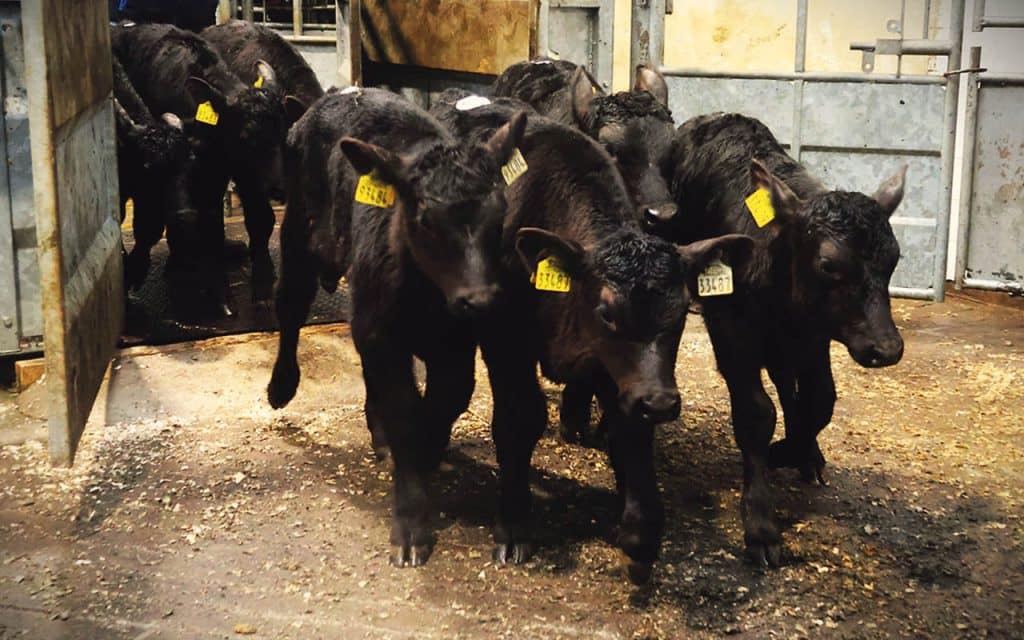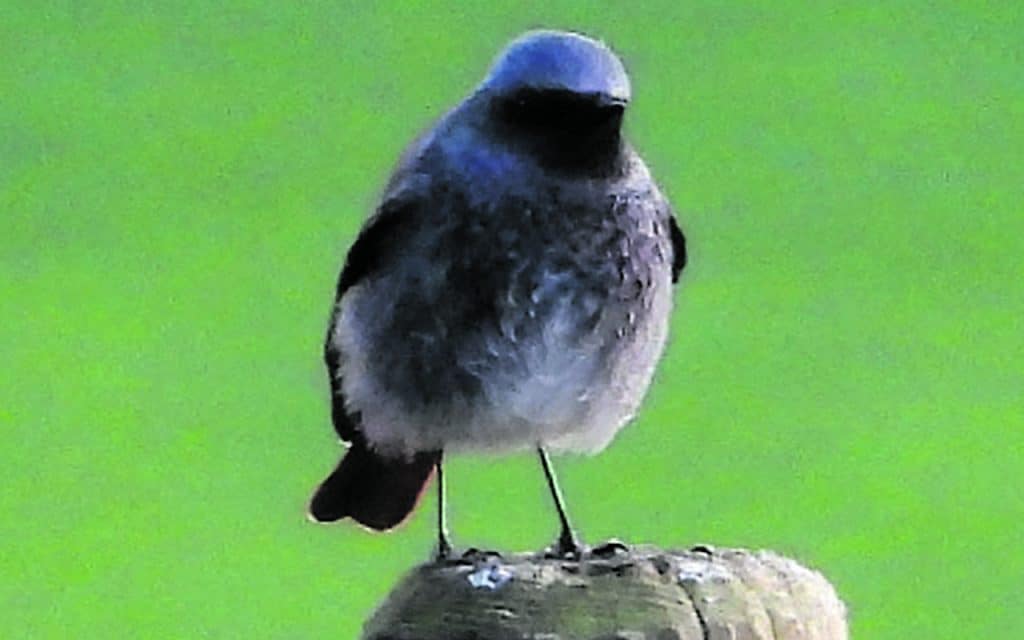
With 2024 in the rearview mirror, Tommy Moyles looks back at how the year was from a farming perspective.
When it came to weather, up until August; 2024 was one of the most challenging years I can recall. There have been washout years, droughts and blizzards in the past, but I think they were easier to manage than the cold that impacted grass growth right up until the autumn. Soil was either saturated or cold for much of that time. There was rain until the end of April, field work was held up and yard work seemed to pile up, as it was difficult to get stock out. Once that eased a bit, we had piercing easterly and northerly winds on a much more regular basis.
With no control over the weather, I know farmers would like some semblance of normality to it. Lower grass growth in summer due to the cold wasn’t something any grass farmer was used to. Silage ground had to be grazed instead of cut, as growth didn’t keep pace with how it normally should be; and that was a worry as we moved into July, with silage made in May being fed on some farms to plug the gap.
The wet spring and colder-than-usual summer increased workloads and costs on farms. Milk suppliers to Carbery were thankful that the board recognised the hardships of spring with a 5c/l payment. That was welcomed at a time when milk price was lower than it ended up being later on in the year.
Soil temperatures and grass growth picked up in the autumn and a mild settled backend to the year proved to be a pressure release valve. It enabled farmers to keep stock out longer, and silage made in later September eased concerns over fodder stocks in some yards.
Of the bigger ticket uncontrollable, weather is the one us farmers deal with on a daily basis. You can bury your head in the sand a little more when it comes to markets and policy but not with rain or sunshine. It has a major influence on farmer mood. So too do the trends of markets
The markets are at the mercy of weather, policy, with geopolitical issues are being felt more in recent years. Most notable of these was the input cost spikes due to the Russian invasion of Ukraine. While that saw input prices reach unprecedented levels, it was tempered by some outputs, most notably milk.
Milk price plummeted in early 2023 and farmers were still dealing with the shock of that this time last year. Fortunately, as the year pressed on, demand improved and Teagasc are forecasting the annual average Irish milk price for 2025 will be up about five per cent compared to 2024 level with production expected to increase by four per cent. After dipping well below 40c/l in 2023, they expect the average prices paid by co-ops for milk to be on the low 50c/l mark for the year.
The increase in production compared to last year will be welcomed by processors too. They have invested a lot in production capacity and after national milk supply fell by four per cent in 2023 and was down nine per cent heading into June 2024 there was a lot of concern and in some cases, there were redundancies. Fortunately, weather improved and global demand for butter drove milk prices on, resulting in most processors getting within two to three per cent of their 2023 supply levels by the end of 2024.
Demand for protein was strong in Europe and on its peripheries too and that helped drive prices, not just for dairy, but beef and sheep meat too. That demand and a reduced supply in both dry stock sectors mean we are seeing very high prices being paid in both and, for now at least, the market seems to be in the farmer’s favour.
If you want a good bellwether of where trade is, traditionally prices slump as the autumn progresses, as cattle numbers from grass increase, but in 2024 that never occurred. Factories were very eager for stock and paid well for it in the lead up to Christmas and continued to do so as the year got underway.
There are two factors at play in the reduced supply. One is of long-term concern and that is the decreasing breeding herds in both cattle and sheep: Generational renewal at farm level is part of the issue here. The second and more immediate issue is that 2024 was a year that saw the live exports of stock at the highest they’ve been at for a long time.
As we know from experience it doesn’t take much to impact markets and disease would be among the immediate concerns, especially since Foot and Mouth disease was detected in a herd of water buffalo in Germany. Nobody wants a repeat of 2001 when it last reached these shores.
Keeping that and Bluetongue out of the country will be key to maintaining those markets. Bluetongue is an insect-borne viral disease to which all species of ruminants are susceptible. While it does not affect humans, it is present in the UK and on the continent and, in part, has helped create demand for Irish stock. If it emerges here, it will be a spanner in the works in terms of live exports and a major effort has been put in place to avoid that including restrictions on imports of livestock to Ireland.
An unexpected event, be it related to disease, politics or weather, is likely to provide the biggest dampener, but for now at least it’s nice to be able to enjoy a bit of positivity in farming circles.
As I mention dampeners, the issue of the nitrates derogation hasn’t gone away and at the end of this year we’ll know if a new four-year Nitrates Action Plan will be in place or not. Speaking at an IFA meeting in Clonakilty in late November, IFA environment committee chairman, John Murphy said that’s as much certainty in terms of tenure that we can expect from it.
There has been a concerted effort to implement measures to improve water quality by farmers and, to surmise him, managing water quality is going to be a constant for farmers, which will be a major determinant in the future of the nitrates derogation. As long as there is constant improvements in water quality, there’s a good chance of its future.
I’ve heard that the question ‘where is the maize?’ was asked by a good few commission officials on a previous visit to West Cork in 2022. That summed up the lack of understanding of the predominantly grass-based system that is in place in Ireland. It’s a type of oversight I’d expect, as everyone is familiar with their own surroundings.
Our largely grass-based model is rarely seen in Continental European milk production so expect more visits to see how the Irish system works.
If improvements continue, I don’t see it disappearing, but I wouldn’t be making long term plans based on a stocking rate of over 220kg N/ha either. I do however think there will be a concerted effort from the European Commission to bring more politicians and officials to Ireland to make a case for retaining our milk production system
West Cork farmers gear up for calving season
Much of West Cork escaped the snow and ice that hit in early January so while most marts were delayed by about a week, almost everything else proceeded as normal.
North Cork got snowfall that was reminiscent of the beast from the east in March 2018. Power was knocked out for the best part of a week and that snow event, which saw heavier-than-expected snow right across a band of the country, from Wicklow to north Kerry, may result in a fine tuning of our weather warning system.
The whole county system isn’t really fit for purpose in some of those scenarios. That was very evident earlier this month. Driving up to the yard near Ardfield village, I could see snow on Carrigfadda and the mountain by Dunmanway but the entire length of west Cork appeared snow free.
West Cork farmers will be hoping that this is the extremely cold weather out of the way for now, with yards across the region becoming a hive of activity over the next few weeks, as calving gets underway. It’s never long coming around, but from now through to the end of March, it will be all go, as the busiest period of the year gets underway.
Teagasc and Animal Health Ireland (AHI) have been running a number of CalfCare on farm events throughout January and two of these take place in West Cork.
Even for farmers who think they know it all, they’re a useful refresher on calf rearing and the do’s and don’ts. These kinds of events are also a good opportunity to get out and meet other farmers before things get too busy.



